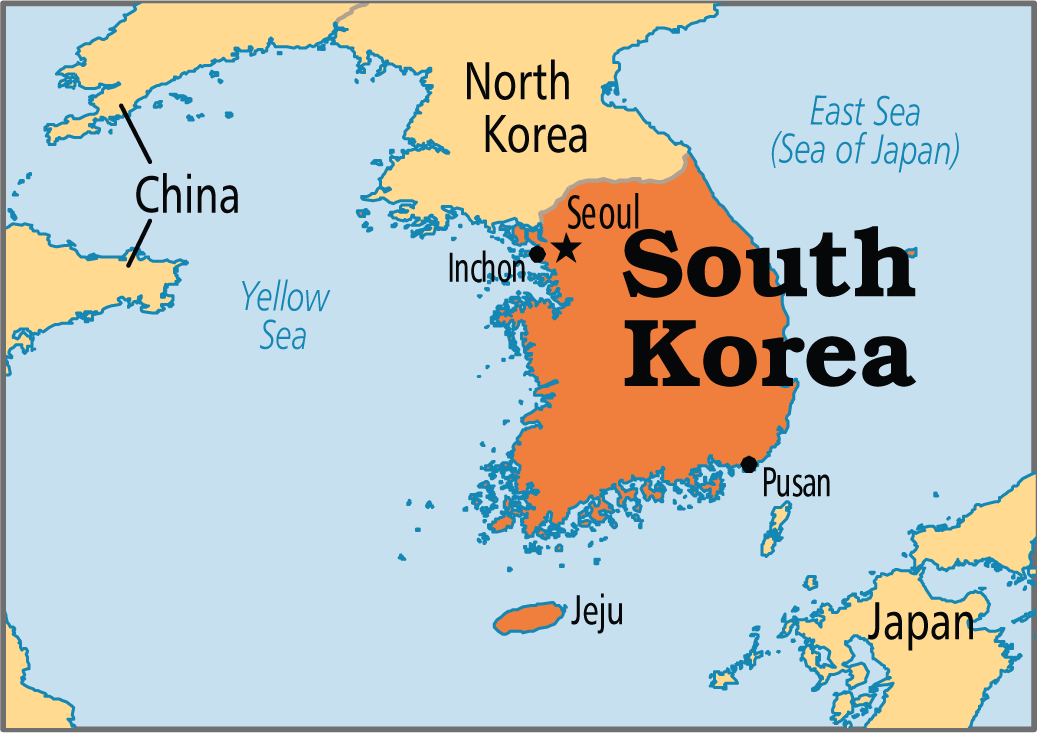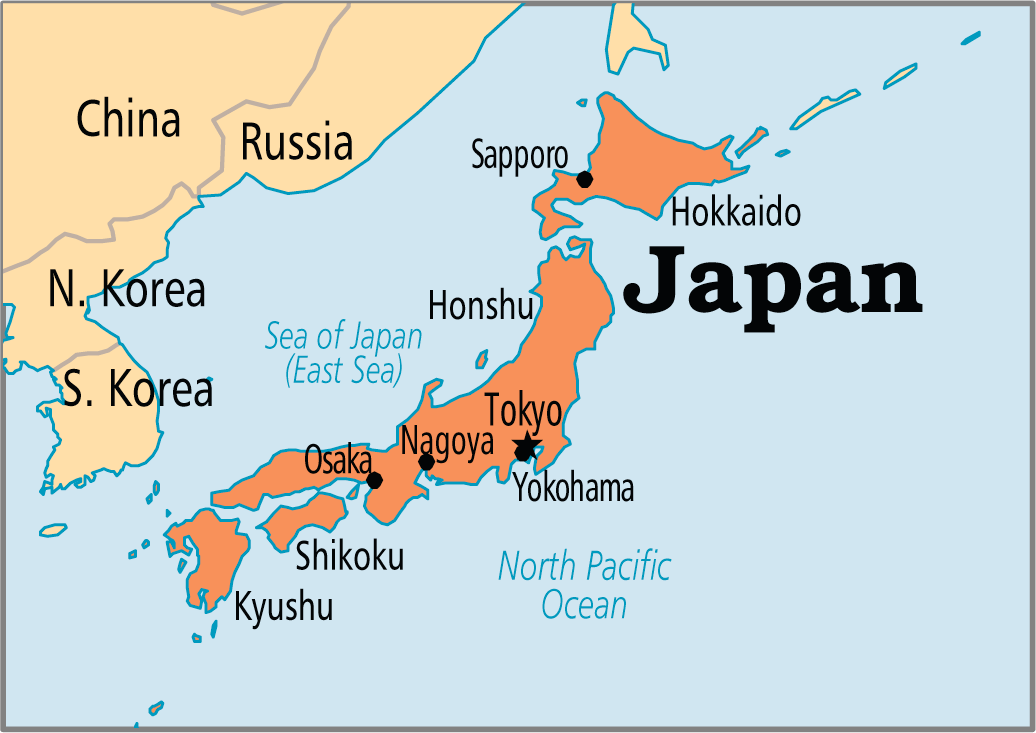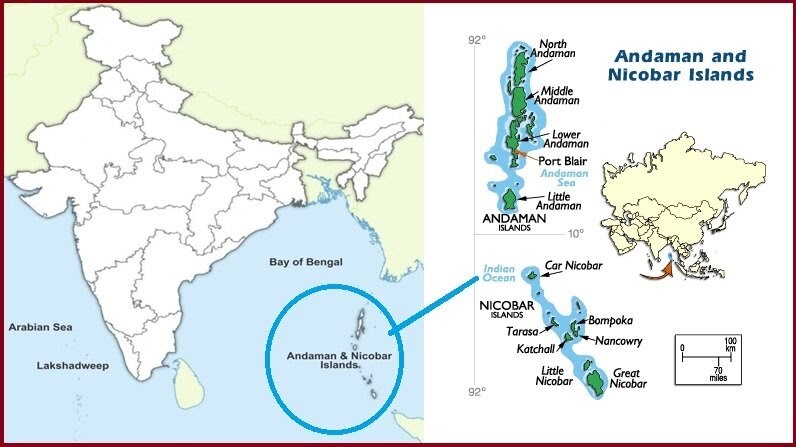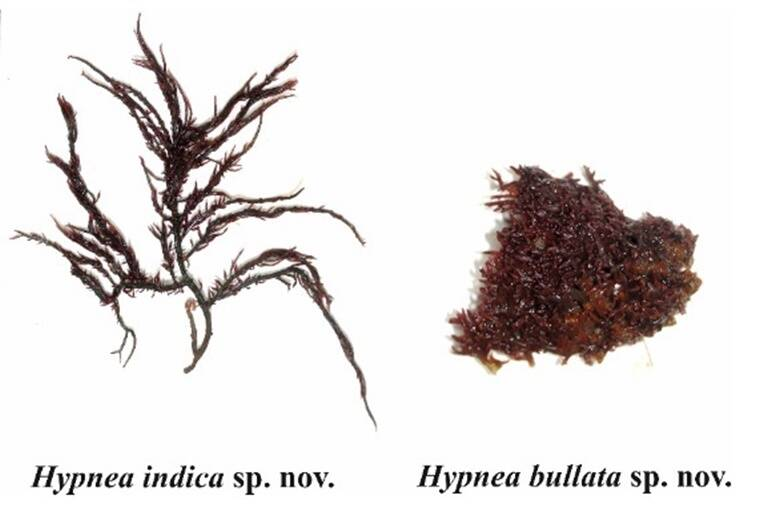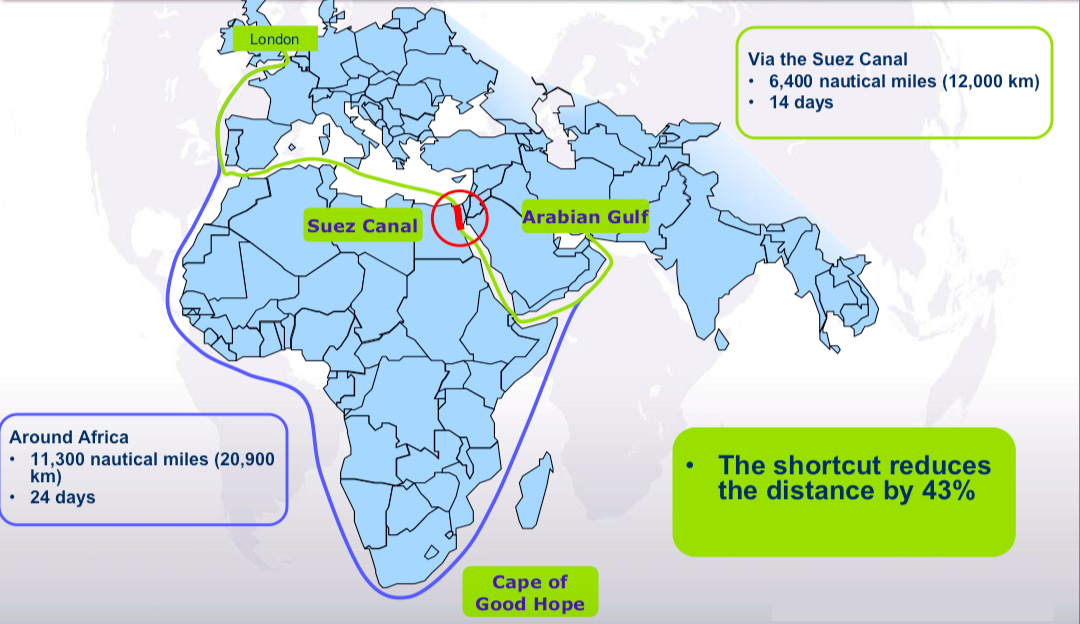India-South Korea: Friendship Park
Why in News
Recently, Indian Defence Minister and his South Korean counterpart inaugurated the India-Korea Friendship Park in a ceremony at the Delhi Cantonment.
- Later on both the ministers concluded a bilateral meeting and explored different areas of cooperation.
- Earlier in February 2019, the Prime Minister of India visited South Korea (Republic of Korea).
Key Points
- About:
- Spread across a green area of six acres, the park includes an entrance gate made in Korean style, a jogging track, well landscaped garden and an amphitheatre.
- Has an imposing handshake artifact standing tall at the entrance bearing flags of India and South Korea.
- Has statue of General KS Thimayya, a celebrated soldier who led the Indian contingent in the Korean War as Chairman of Neutral Nations Repatriation Commission (NNRC) in Korea headed by India.
- Neutral Nations Repatriation Commission:
- One of the follow-up actions to the Armistice Agreement in the Korean War was the establishment of a NNRC which was to decide on the fate of over 20,000 prisoners of war from both sides.
- India was chosen as the Chair of the NNRC, with Poland and Czechoslovakia representing the Communist bloc and Sweden and Switzerland representing the Western world.
- Neutral Nations Repatriation Commission:
- The five pillars raised in the backdrop of General Thimayya’s statue are embossed with details of operations carried out by 60 Parachute Field Ambulance (deployed by India) during the Korean war where they had treated about 1,95,000 cases, and performed about 2,300 field surgeries.
- One pillar also encompasses Nobel Laureate Gurudev Rabindranath Tagore’s narration of Korea as “The Lamp of the East” which was published in Korean daily “Dong-A-ilbo” in 1929.
- Developed By:
- The park has been developed in joint consultation with the Ministry of Defence, Government of India, Indian Army, Delhi Cantonment Board, Embassy of Korea and Korean War Veterans Association of India.
- Significance:
- The park's significance is not only because of it being a symbol of strong India-South Korea friendly relations, but also as a monument to India’s contributions as part of 21 countries which participated in Korean war 1950-53, under the aegis of the United Nations.
- Issues Discussed at the Meet:
- Discussed maritime cooperation as part of the Indo-Pacific strategy and also cooperation in the defense industry and future technologies.
- The two countries have a logistics agreement helping the Indian navy while operating in the Indo-Pacific region.
- Discussed maritime cooperation as part of the Indo-Pacific strategy and also cooperation in the defense industry and future technologies.
India-South Korea Relations
- Political:
- During the Korean War (1950- 53), India played a major role in a cease-fire agreement signed between both the warring sides (North Korea and South Korea) and the ceasefire was declared on 27th July 1953.
- In May 2015, the bilateral relationship was upgraded to ‘special strategic partnership’.
- India has a major role to play in South Korea’s Southern Policy under which Korea is looking at expanding relations beyond its immediate region.
- Similarly, South Korea is a major player in India’s Act East Policy under which India aims to promote economic cooperation, cultural ties and develop strategic relationships with countries in the Asia-Pacific.
- Economic:
- The current bilateral trade between India and South Korea is at USD 21 billion and the target that has been set is USD 50 billion by the year 2030.
- India and South Korea have signed the Comprehensive Economic Partnership Agreement (CEPA), 2010 which has facilitated the growth of trade relations.
- To facilitate investment from Korea, India has launched a "Korea Plus” facilitation cell under ‘Invest India’ to guide, assist and handhold investors.
- India’s share in Korea’s global trade was 1.72% in 2020 and India’s contribution in Korea’s global imports increased from 0.78% in 2001 to 1.05% in 2020.
- Cultural:
- Korean Buddhist Monk Hyecho or Hong Jiao visited India from 723 to 729 AD and wrote the travelogue "Pilgrimage to the five kingdoms of India" which gives a vivid account of Indian culture, politics & society.
- Nobel Laureate Rabindranath Tagore had composed a short but evocative poem – 'Lamp of the East' - in 1929 about Korea's glorious past and its promising bright future.
- To further enhance cultural exchanges between India and Korea, Indian Cultural Centres (ICC) were established in Seoul in April 2011 and in Busan in December 2013.
- Multilateral Platforms Shared by Both the Countries:
Way Forward
- India and South Korea relations have made great strides in recent years and have become truly multidimensional, spurred by a significant convergence of interests, mutual goodwill and high level exchanges.
- However, there is massive scope to expand ties between India and South Korea and make it a unique relationship in Asia. What is needed is political will and new imagination in diverse areas such as cultural relations, building on people-to-people contacts, harnessing democracy and liberal values, and cementing civilisational connections.
Japan to Fund Projects in India
Why in News
Japan has finalised loans and a grant totalling around 233 billion yen for several key infrastructure projects in India, including for a project in the Andaman and Nicobar islands.
Key Points
- Grant for Andaman and Nicobar Islands (ANI):
- About the Grant:
- A grant of 4.01 billion yen for a project for the improvement of power supply in strategically located Andaman and Nicobar Islands.
- The grant would be used to procure 15MWh batteries as well as power system stabilisers to allow better utilisation of solar power generated in South Andaman.
- This grant is Japan's first ever Official Development Assistance (ODA) to a project in the A&N islands.
- A grant of 4.01 billion yen for a project for the improvement of power supply in strategically located Andaman and Nicobar Islands.
- About Official Development Assistance (ODA):
- ODA is defined as government aid designed to promote the economic development and welfare of developing countries.
- Loans and credits for military purposes are excluded.
- India has been the top recipient of the Japanese government's financial aid under the ODA.
- ODA is defined as government aid designed to promote the economic development and welfare of developing countries.
- About the Grant:
- Japan’s Aid for Other Projects:
- For Delhi Metro’s fourth phase.
- For Metro lines under Namma Metro’s second phase in Bengaluru.
- For crop diversification in Himachal Pradesh.
- For mitigating fluorosis in Rajasthan’s Jhunjhunu and Barmer districts.
- Other Recent Developments Between India and Japan:
- Recently, the first summit of the leaders' of the QUAD (Quadrilateral Framework) was held virtually.
- QUAD is a four-nation alliance of India, Australia, USA and Japan.
- In 2020, India and Japan signed a logistics agreement that will allow armed forces of both sides to coordinate closely in services and supplies. The agreement is known as the Acquisition and Cross-Servicing Agreement (ACSA).
- In 2019, India and Japan held the first-ever ministerial-level 2+2 dialogue. This dialogue involved the Defence and Foreign Ministers on both sides and is seen as an endorsement of the special strategic partnership between India and Japan.
- A “India-Japan Digital Partnership (I-JDP)” was launched during the visit of the Prime Minister of India to Japan in October 2018, furthering existing areas of cooperation as well as new initiatives within the scope of cooperation in S&T/ICT, focusing more on “Digital ICT Technologies”.
- In 2014, India and Japan upgraded their relationship to 'Special Strategic and Global Partnership'.
- The India-Japan Comprehensive Economic Partnership Agreement (CEPA) that came into force in August 2011 covers trade in goods, services, movement of natural persons, investments, Intellectual Property Rights, custom procedures and other trade related issues.
- India and Japan defence forces organize a series of bilateral exercises namely, JIMEX (naval), SHINYUU Maitri (Air Force), and Dharma Guardian (Army). Both countries also participate in Malabar exercise (Naval Exercise) with the USA.
- Recently, the first summit of the leaders' of the QUAD (Quadrilateral Framework) was held virtually.
Significance of Andaman and Nicobar Islands
- The Andaman and Nicobar Islands (ANI) are located at the juncture of the Bay of Bengal and the Andaman Sea.
- It is a group of 572 islands, which straddles some of the busiest trade routes in the world.
- ANI spans 450 nautical miles in a roughly north-south configuration adjacent to the western entrance to the Malacca Strait, which is itself a major Indian Ocean chokepoint.
- Geopolitically, the ANI connects South Asia with South-East Asia. While the northernmost point of the archipelago is only 22 nautical miles from Myanmar, the southernmost point, Indira Point, is a mere 90 nautical miles from Indonesia.
- The islands dominate the Bay of Bengal, the Six Degree and the Ten Degree Channels that more than sixty thousand commercial vessels traverse each year.
- The Andaman and Nicobar Islands constitute just 0.2% of India’s landmass but provide near 30% of its Exclusive Economic Zone.
- Due to the presence of ANI in the Bay of Bengal, India has a better position to play a vital role in Indo-Pacific.
- Recently, the Prime Minister has declared that the ANI will be developed as a "maritime and startup hub".
Fluorosis
- Fluorosis is a cosmetic condition that affects the teeth.
- It’s caused by overexposure to fluoride during the first eight years of life. This is the time when most permanent teeth are being formed.
- After the teeth come in, the teeth of those affected by fluorosis may appear mildly discolored.
Way Forward
- India needs sophisticated technology from Japan, so more collaboration and cooperation can prove beneficial to both nations.
- There is a huge potential with respect to Make in India. Joint ventures could be created by merging Japanese digital technology with Indian raw materials and labour.
- Close cooperation is the best measure to combat China’s growing role in Asia and Indo-Pacific, in physical as well as digital space.
Shifting Health to the Concurrent List
Why in News
Fifteenth Finance Commission Chairman N.K. Singh said that health should be shifted to the Concurrent list under the Constitution. Presently, ‘Health’ is under the State List.
- He also pitched for a Developmental Finance Institution (DFI) dedicated to healthcare investments.
Key Points
- Arguments for Shifting ‘Health’ to the Concurrent List:
- Centre with Greater Flexibility: Bringing health into the Concurrent list would give the Centre greater flexibility to enact regulatory changes and reinforce the obligation of all stakeholders towards providing better healthcare.
- Rationalisation and Streamlining of the Multiple Acts: There is a multiplicity of Acts, rules and regulations, and mushrooming institutions, yet the regulation of the sector is far from adequate.
- With the health in the concurrent list, uniformity of acts can be ensured.
- Centre Expertise to States: The Central government is also technically better equipped to come up with the health schemes because it has the assistance of multiple research bodies and departments dedicated to the management of public health.
- States on the other hand do not have the technical expertise to independently design comprehensive public health policies.
- Arguments Against Shifting ‘Health’ to the Concurrent List:
- Right to Health: It is neither necessary nor sufficient to guarantee the provision of accessible, affordable and adequate healthcare for all.
- Besides, the right to health is, arguably, already provided for via the Constitution’s Article 21 that guarantees protection of life and liberty.
- Challenges Federal Structure: Shifting ever more subjects from the states to the Centre would erode India’s federal nature and impair efficiency by abandoning the principle of subsidiarity, which holds that any task should be left to the level of government best placed to do it.
- Trust Cooperative Federalism: The centre must direct its energies to designing policy that would help states deliver on their constitutional mandate to provide adequate, accessible and affordable healthcare for all.
- More Burden With Centre: The Centre has onerous responsibilities of its own, for which it struggles to find resources. Taking more functions would help neither the states nor the Centre discharge their constitutional obligations.
- Encourage States: The Centre devolves 41% of the taxes it collects to the states. The Centre should encourage the states to do what they are supposed to do, while the Centre optimises use of its own resources, focusing on its obligations.
- Health being a state subject does not preclude the Centre offering constructive support.
- The NITI Aayog’s Health Index, financial assistance through the insurance-based programme Ayushman Bharat, improved regulatory environment for healthcare providers and medical education are examples of such support that can nudge states in the right direction.
- Right to Health: It is neither necessary nor sufficient to guarantee the provision of accessible, affordable and adequate healthcare for all.
- Developmental Finance Institution (DFI) for Health Care:
- A health sector-specific DFI is much needed on the same lines as that of DFIs for other sectors like National Bank for Agriculture and Rural Development -NABARD (agriculture), National Housing Bank- NHB (Housing) and Tourism Finance Corporation of India Ltd. - TFCI (tourism).
- Such a DFI would increase health care access in tier-2 and tier-3 cities and also come with technical assistance that ensures proper usage of funds.
- Other Suggestions by N.K. Singh:
- Increase the government spending on health to 2.5% of GDP by 2025.
- Primary healthcare should be a fundamental commitment of all States in particular and should be allocated at least two-thirds of health spending.
- To have a standardisation of health care codes for both the Centre and states.
- Forming an All India Medical and Health Service.
- Given the inter-state disparity in the availability of medical doctors, it is essential to constitute the Service as is envisaged under Section 2A of the All-India Services Act, 1951.
- Emphasised the importance of universalising healthcare insurance, as a large section of the society still remain uncovered.
- Need for Universalisation of Healthcare Insurance:
- Existing Insurance Coverage: The Pradhan Mantri Jan Arogya Yojana (PMJAY) covers the bottom two income quintiles and commercial insurance largely covers top-income quintiles, thereby creating a ‘missing middle’ class in between.
- Missing Middle: This refers to people in the middle two income quintiles, where the population is not rich enough to afford commercial insurance and not poor enough to be covered under government-sponsored health insurance schemes.
Concurrent List
- The subject-wise distribution of legislative power is given in the three lists of the Seventh Schedule of the Constitution:
- List-I- the Union List
- List-II- the State List
- List-III- the Concurrent List
- Both, the Parliament and state legislature can make laws with respect to any of the matters enumerated in the Concurrent List.
- It includes the matters on which uniformity of legislation throughout the country is desirable but not essential.
- However State legislation operates to the extent that it is not in conflict with the Central legislation. At times, the very presence of a central legislation can negate the state’s ability to legislate.
- This list has at present 52 subjects (originally 47) like criminal law and procedure, civil procedure, marriage and divorce, population control and family planning, electricity, labour welfare,economic and social planning, drugs, newspapers, books and printing press, and others.
- The 42nd Amendment Act of 1976 transferred five subjects to Concurrent List from State List i.e education, forests, weights and measures, protection of wild animals and birds, and administration of justice; constitution and organisation of all courts except the Supreme Court and the High Courts.
Development Finance Institution
- These are specialized institutions set up primarily to provide development/ Project finance especially in developing countries.
- These DFIs are usually majority-owned by national governments.
- The source of capital of these banks is national or international development funds.
- This ensures their creditworthiness and their ability to provide project finance at a very competitive rate.
NISAR: Joint Earth Observing Mission of NASA and ISRO
Why in News
NASA and ISRO are collaborating on developing an SUV-sized satellite called NISAR, which will detect movements of the planet’s surface as small as 0.4 inches over areas about half the size of a tennis court.
- The satellite will be launched in 2022 from the Satish Dhawan Space Center in Sriharikota (Andhra Pradesh) into a near-polar orbit.
Key Points
- The Name ‘NISAR’: The name NISAR is short for NASA-ISRO-SAR.
- SAR here refers to the Synthetic Aperture Radar that NASA will use to measure changes in the surface of the Earth.
- It refers to a technique for producing high-resolution images. Because of the precision, the radar can penetrate clouds and darkness, which means that it can collect data day and night in any weather.
- Function: It will scan the globe every 12 days over the course of its three-year mission of imaging the Earth’s land, ice sheets and sea ice to give an unprecedented view of the planet.
- Role of NASA:
- National Aeronautics and Space Administration (NASA - space agency of the USA) will provide one of the radars for the satellite, a high-rate communication subsystem for science data, GPS receivers and a payload data subsystem.
- NISAR will be equipped with the largest reflector antenna ever launched by NASA.
- Role of ISRO:
- Indian Space and Research Organisation (ISRO) will provide the spacecraft bus, the second type of radar (called the S-band radar), the launch vehicle and associated launch services.
- Primary Goals:
- Tracking subtle changes in the Earth’s surface,
- Spotting warning signs of imminent volcanic eruptions,
- Helping to monitor groundwater supplies, and
- Tracking the rate at which ice sheets are melting.
- Expected Benefits:
- NISAR's data can help people worldwide better manage natural resources and hazards, as well as providing information for scientists to better understand the effects and pace of climate change.
- The images will be detailed enough to show local changes and broad enough to measure regional trends.
- As the mission continues for years, the data will allow for better understanding of the causes and consequences of land surface changes.
- It will also add to our understanding of our planet's hard outer layer, called its crust.
- NISAR's data can help people worldwide better manage natural resources and hazards, as well as providing information for scientists to better understand the effects and pace of climate change.
S-Band Radar
- S band radars operate on a wavelength of 8-15 cm and a frequency of 2-4 GHz.
- Because of the wavelength and frequency, S-band radars are not easily attenuated. This makes them useful for near and far range weather observation.
- The drawback to this band of radar is that it requires a large antenna dish and a large motor to power it. It is not uncommon for a S-band dish to exceed 25 feet in size.
New Red Algal Seaweed Species
Why in News
Recently, two new red algal seaweed species have been discovered along India’s coastline.
- India has a vast coastline of over 7,500 kms.
Key Points
- About:
- They grow in the intertidal regions of the coast, namely the area that is submerged during the high tide and exposed during low tides.
- The genus Hypnea consists of calcareous, erect, branched red seaweeds.
- There are 61 species of which 10 were reported in India. With two new species, the total number of species now would be 63.
- Location:
- Hypnea indica was discovered in Kanyakumari in Tamil Nadu, and Somnath Pathan and Sivrajpur in Gujarat.
- Hypnea bullata was discovered from Kanyakumari and Diu island of Daman and Diu.
- Significance:
- Hypnea variants of seaweeds can fetch good monetary value if commercial-scale cultivation is taken up. Hypnea contains Carrageenan, a biomolecule commonly used in the food industry.
Seaweeds
- About:
- They are the primitive, marine non-flowering marine algae without root, stem and leaves, play a major role in marine ecosystems.
- Large seaweeds form dense underwater forests known as kelp forests, which act as underwater nurseries for fish, snails and sea urchins.
- Some species of seaweeds viz. Gelidiella acerosa, Gracilaria edulis, Gracilaria crassa, Gracilaria verrucosa, Sargassum spp. and Turbinaria spp.
- Location:
- Seaweeds, found mostly in the intertidal region, in shallow and deep waters of the sea and also in estuaries and backwaters.
- The southern Gulf of Mannar’s rocky intertidal and lower intertidal regions have rich populations of several seaweed species.
- Ecological Importance:
- Bioindicator:
- When waste from agriculture, industries, aquaculture and households are let into the ocean, it causes nutrient imbalance leading to algal blooming, the sign of marine chemical damage. Seaweeds absorb the excess nutrients and balance out the ecosystem.
- Iron Sequestrator:
- These aquatic organisms heavily rely on iron for photosynthesis. When the quantity of this mineral exceeds healthy levels and becomes dangerous to marine life, seaweeds trap it and prevent damage. Similarly, most heavy metals found in marine ecosystems are trapped and removed by seaweeds.
- Oxygen and Nutrient Supplier:
- On their part, the seaweeds derive nutrition through photosynthesis of sunlight and nutrients present in seawater. They release oxygen through every part of their bodies. They also supply organic nutrients to other marine life forms.
- Bioindicator:
- Role in Climate Mitigation:
- Seaweed has a significant role in mitigating climate change. By afforesting 9% of the ocean with seaweed, it is possible to sequester 53 billion tons of carbon dioxide annually. Hence, there is a proposal termed as ‘ocean afforestation’ for farming seaweed to remove carbon.
- Other Utilities:
- They can be used as fertilizers and to increase aquaculture production.
- When livestock is fed with seaweed, methane emission from cattle may be reduced substantially.
- They can be buried in beach dunes to combat beach erosion.
- It is used as an ingredient in preparing toothpaste, cosmetics and paints.
- Related Initiative:
- Recently, the Technology Information, Forecasting and Assessment Council (TIFAC) has launched a Seaweed Mission.
Maharaja Chhatrasal
Why in News
The Maharaja Chhatrasal Convention Centre has been inaugurated at Khajuraho, Madhya Pradesh.
- The Convention Centre, named after the legendary Bundelkhand King Maharaja Chhatrasal, was built under the Swadesh Darshan scheme of the Ministry of Tourism.
Khajuraho
- It is one of the nineteen identified iconic destinations in the country.
- The Ministry of Tourism has framed ‘Development of Iconic Tourist Destinations Scheme’, a Central Sector Scheme for development of nineteen identified iconic destinations in the country following a holistic approach.
- The Khajuraho Group of Monuments is listed as a UNESCO world heritage site.
- The temples are famous for their nagara-style architectural symbolism and their erotic sculptures.
- Most Khajuraho temples were built between 885 AD and 1050 AD by the Chandela dynasty.
Swadesh Darshan Scheme
- Swadesh Darshan, a Central Sector Scheme, was launched in 2014-15 for integrated development of theme based tourist circuits in the country.
- Currently, there are 15 theme based circuits - Buddhist, Coastal, Desert, Eco, Heritage, Himalayan, Krishna, North-east, Ramayana, Rural, Spiritual, Sufi, Tirthankara, Tribal and Wildlife.
- Theme-based tourist circuits are developed on the principles of high tourist value, competitiveness and sustainability in an integrated manner to enrich tourist experience and enhance employment opportunities.
- Under the scheme, the Ministry of Tourism provides Central Financial Assistance (CFA) to State Governments/Union Territory Administrations for infrastructure development of circuits.
- This scheme is envisioned to synergise with other schemes like Swachh Bharat Abhiyan, Skill India, Make in India etc. with the idea of positioning the tourism sector as a major engine for job creation, driving force for economic growth and building synergy with various sectors to enable tourism to realise its potential.
Key Points
- Brief Profile:
- Birth : Born on 4th May 1649, to Champat Rai and Lal Kunwar, into the Bundela Rajput clan.
- Medieval Indian warrior, fought against the Mughal Empire, and established his own kingdom in Bundelkhand.
- Descendant of Rudra Pratap Singh of Orchha.
- Ancestors were vassals of the Mughal emperor.
- Death: 20th December, 1731.
- Power Struggle Against the Mughal:
- He started his struggle in 1671, and first captured Naugaon region of Chhatarpur district.
- He fought for 50 years against Mughals and captured a large part of Bundelkhand with his seat of power at Panna.
- Relation with Baji Rao I:
- Baji Rao I helped Chhatrashal against the Mughals. He sent military aid against the Mughal force led by Muhammad Khan Bangash in 1728.
- The Maratha Peshwa Baji Rao I's second wife Mastani was Chhatrasal's daughter.
- Before his death, Chhatrasal transferred Mahoba and the surrounding area to Baji Rao I in return for his assistance against the Mughals.
- Patron of Literature :
- His court housed several noted poets. His eulogies written by Kavi Bhushan, Lal Kavi, Bakhshi Hansaraj and other court poets helped him gain lasting fame.
- Religious View:
- Disciple of Mahamati Prannathji.
- Swami Prannathji also guided him in political, social, and economic matters.
- Swami Prannathji told Chhatrasal regarding Diamond mines of Panna and thus helped him in strengthening his financial position.
- Legacy:
- The Chhatarpur town and its district in Madhya Pradesh are named after Chhatrasal.
- Maharaja Chhatrasal Museum in Madhya Pradesh and the Chhatrasal Stadium in Delhi are also named after the Maharaja Chhatrasal.
Cape of Good Hope
Why in News
Due to the recent blockage of the Suez Canal, the option of re-routing ships via the Cape of Good Hope was explored.
Key Points
- About:
- The Cape of Good Hope is a rocky headland on the Atlantic coast of the Cape Peninsula in South Africa.
- A headland is a narrow piece of land which sticks out from the coast into the sea.
- The Cape of Good Hope route joins Eastern Asia and Europe to southern parts of Africa.
- The opening of the Suez Canal in 1869 provided a much shorter route from the Mediterranean Sea to the Indian Ocean, making the long trip around Africa inefficient.
- The Cape of Good Hope route is 8900 km longer than the Suez canal route and can take additional two weeks.
- A common misconception is that the Cape of Good Hope is the southern tip of Africa.
- Contemporary geographic knowledge instead states the southernmost point of Africa is Cape Agulhas about 150 km to the east-southeast.
- The warm-water Agulhas current (Indian Ocean) meets the cold-water Benguela current (Atlantic ocean) between Cape Agulhas and Cape Point (about 1.2 km east of the Cape of Good Hope).
- The Cape of Good Hope is a rocky headland on the Atlantic coast of the Cape Peninsula in South Africa.
- History:
- The Cape was originally named the Cape of Storms in 1488 by the Portuguese explorer Bartolomeu Dias.
- It was later renamed to Cape Good Hope to attract more people to the Cape Sea Route that passed the southern coast of Africa.
- The Cape eventually became a significant port and waypoint for sailors traveling from Europe to Asia.

